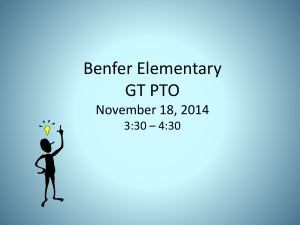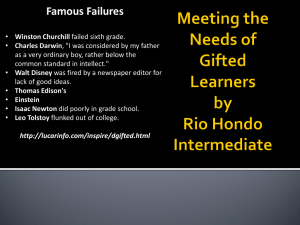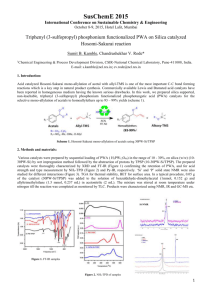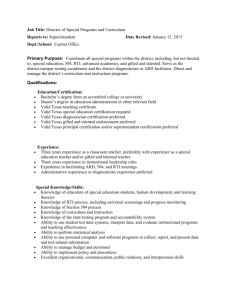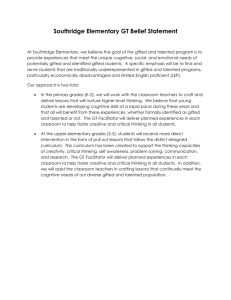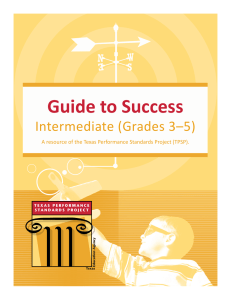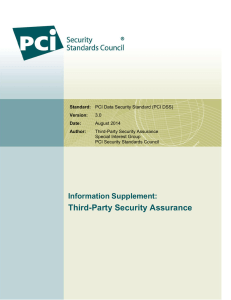TEXAS PERFORMANCE STANDARDS PROJECT (TPSP) www
advertisement
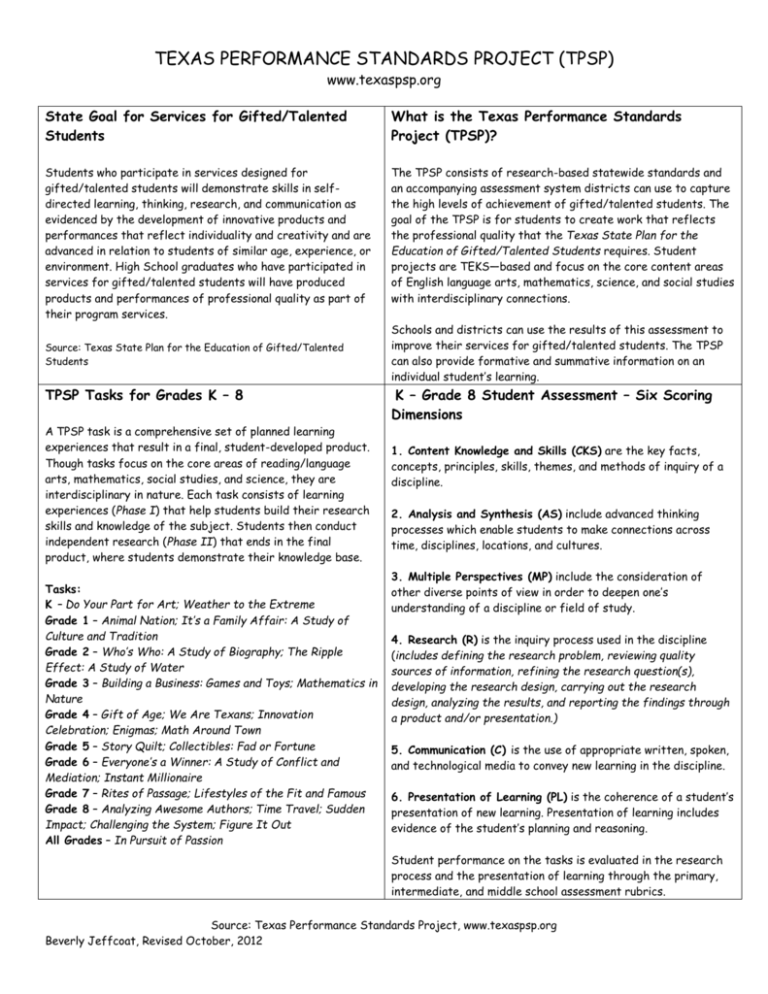
TEXAS PERFORMANCE STANDARDS PROJECT (TPSP) www.texaspsp.org State Goal for Services for Gifted/Talented Students What is the Texas Performance Standards Project (TPSP)? Students who participate in services designed for gifted/talented students will demonstrate skills in selfdirected learning, thinking, research, and communication as evidenced by the development of innovative products and performances that reflect individuality and creativity and are advanced in relation to students of similar age, experience, or environment. High School graduates who have participated in services for gifted/talented students will have produced products and performances of professional quality as part of their program services. The TPSP consists of research-based statewide standards and an accompanying assessment system districts can use to capture the high levels of achievement of gifted/talented students. The goal of the TPSP is for students to create work that reflects the professional quality that the Texas State Plan for the Education of Gifted/Talented Students requires. Student projects are TEKS—based and focus on the core content areas of English language arts, mathematics, science, and social studies with interdisciplinary connections. Source: Texas State Plan for the Education of Gifted/Talented Students TPSP Tasks for Grades K – 8 A TPSP task is a comprehensive set of planned learning experiences that result in a final, student-developed product. Though tasks focus on the core areas of reading/language arts, mathematics, social studies, and science, they are interdisciplinary in nature. Each task consists of learning experiences (Phase I) that help students build their research skills and knowledge of the subject. Students then conduct independent research (Phase II) that ends in the final product, where students demonstrate their knowledge base. Tasks: K – Do Your Part for Art; Weather to the Extreme Grade 1 – Animal Nation; It’s a Family Affair: A Study of Culture and Tradition Grade 2 – Who’s Who: A Study of Biography; The Ripple Effect: A Study of Water Grade 3 – Building a Business: Games and Toys; Mathematics in Nature Grade 4 – Gift of Age; We Are Texans; Innovation Celebration; Enigmas; Math Around Town Grade 5 – Story Quilt; Collectibles: Fad or Fortune Grade 6 – Everyone’s a Winner: A Study of Conflict and Mediation; Instant Millionaire Grade 7 – Rites of Passage; Lifestyles of the Fit and Famous Grade 8 – Analyzing Awesome Authors; Time Travel; Sudden Impact; Challenging the System; Figure It Out All Grades – In Pursuit of Passion Schools and districts can use the results of this assessment to improve their services for gifted/talented students. The TPSP can also provide formative and summative information on an individual student’s learning. K – Grade 8 Student Assessment – Six Scoring Dimensions 1. Content Knowledge and Skills (CKS) are the key facts, concepts, principles, skills, themes, and methods of inquiry of a discipline. 2. Analysis and Synthesis (AS) include advanced thinking processes which enable students to make connections across time, disciplines, locations, and cultures. 3. Multiple Perspectives (MP) include the consideration of other diverse points of view in order to deepen one’s understanding of a discipline or field of study. 4. Research (R) is the inquiry process used in the discipline (includes defining the research problem, reviewing quality sources of information, refining the research question(s), developing the research design, carrying out the research design, analyzing the results, and reporting the findings through a product and/or presentation.) 5. Communication (C) is the use of appropriate written, spoken, and technological media to convey new learning in the discipline. 6. Presentation of Learning (PL) is the coherence of a student’s presentation of new learning. Presentation of learning includes evidence of the student’s planning and reasoning. Student performance on the tasks is evaluated in the research process and the presentation of learning through the primary, intermediate, and middle school assessment rubrics. Source: Texas Performance Standards Project, www.texaspsp.org Beverly Jeffcoat, Revised October, 2012 TEXAS PERFORMANCE STANDARDS PROJECT (TPSP) www.texaspsp.org Meeting the State Goal through the High School/Exit Level TPSP High School/Exit Level Assessment – Nine Scoring Dimensions At the high school/exit level, gifted/talented students garner all the resources they have fine-tuned over their K – 12 education to design an independent project that is individualized and based on a topic of their choosing. Over the course of a year, students work with a mentor, who is a professional in the chosen field of study, to create a unique, innovative final product or performance that is of professional quality. The TPSP provides opportunities for students to explore their areas of interest and passion to an extent that is not often possible in school. Such an in-depth study may impact students’ future studies and career plans. 1. Knowledge and Skills is the sum of what has been learned, including new understanding and abilities, related to the topic of study. In this system, knowledge and skills are based on the Texas Essential Knowledge and Skills (TEKS). 2. Innovation and Application is the creative use of knowledge and skills learned in the course of the project as demonstrated in the final product. 3. Analysis and Synthesis are the thinking processes in which whole topics are separated into their constituent parts for study and reconstituted to form a new, coherent whole. 4. Ethics/Unanswered Questions include the development of a project in alignment with rules or standards of conduct governing the field of study. Additionally, this dimension considers the student’s awareness and treatment of issues related to the study that lack a consensus among professionals in the field. 5. Multiple Perspectives encompass the ability to examine an issue from more than one point of view, including the ability to separate one’s own point of view from those of others. 6. Methodology and Use of Resources cover the use of principles, procedures, practices, and references of the field of study to guide, but not limit, the project. 7. Communication is the use of written, spoken, and technological media to convey new learning. 8. Relevance and Significance include the potential impact of the project on the individual student and other social groups, as well as the field of study. 9. Professional Quality is the nature of the project that suggests that the skills and knowledge demonstrated in the product are comparable to those of a person engaged in the field of study as a livelihood. (Expert Level on Assessment Rubric) High School TPSP Tasks The high school tasks provide the requisite rigor in the research process to prepare students for the exit level TPSP. Even though the tasks have specific content area designations, they can be adapted to multiple disciplines. Tasks: In the Community: A Study of Culture (ELA, SS) We’ve Got a Problem (ELA, Math) The Comedic Lens: Analyzing a Society through Its Use of Comedy (ELA, SS) What’s the Diagnosis? Historical and Physical Impacts of Disease (Science) So You Have Issues – Now What? Policy Explorations (SS) Candidate Z (Technology) In Pursuit of Passion (Interdisciplinary) Student performance is evaluated in the research process and presentation of learning with the high school/exit level assessment rubric. TPSP Resources -Assessment Rubrics -Guides for Success -Evaluation Reports -Promotional Materials -Continuum of Learning Experience Framework Charts (COLEF) -Walkthroughs for Administrators -Management Forms -Sample Projects (Fourth, Eighth, and Exit Level) -Instructional Strategies and Resources -G/T Teacher Toolkits -Awareness Training: Real World Impact on Students, Communities, and Schools -COLEF Chart Training: Roadmap to Success -Assessment Training: Assessing for Growth Exit Level Delivery Options Because of the heavy emphasis on individualized projects, the TPSP lends itself to many delivery options at the high school/exit level. Students may develop projects as a class assignment or as part of an independent study course. Each district has the flexibility to determine the best avenue to deliver instruction and schedule students so that they have the necessary support to complete their projects. Source: Texas Performance Standards Project, www.texaspsp.org Beverly Jeffcoat, Revised October, 2012 TEXAS PERFORMANCE STANDARDS PROJECT (TPSP) www.texaspsp.org Source: Texas Performance Standards Project, www.texaspsp.org Beverly Jeffcoat, Revised October, 2012
